Persistently increased post-stress activity of paraventricular thalamic neurons is essential for the emergence of stress-induced alterations in behaviour
- PMID: 39836670
- PMCID: PMC11750107
- DOI: 10.1371/journal.pbio.3002962
Persistently increased post-stress activity of paraventricular thalamic neurons is essential for the emergence of stress-induced alterations in behaviour
Abstract
A single exposure to a stressful event can result in enduring changes in behaviour. Long-term modifications in neuronal networks induced by stress are well explored but the initial steps leading to these alterations remain incompletely understood. In this study, we found that acute stress exposure triggers an immediate increase in the firing activity of calretinin-positive neurons in the paraventricular thalamic nucleus (PVT/CR+) that persists for several days in mice. This increase in activity had a causal role in stress-induced changes in spontaneous behaviour. Attenuating PVT/CR+ neuronal activity for only 1 h after the stress event rescued both the protracted increase in PVT/CR+ firing rate and the stress-induced behavioural alterations. Activation of the key forebrain targets (basolateral amygdala, prelimbic cortex, and nucleus accumbens) that mediate defensive behaviour has also been reduced by this post-stress inhibition. Reduction of PVT/CR+ cell activity 5 days later remained still effective in ameliorating stress-induced changes in spontaneous behaviour. The results demonstrate a critical role of the prolonged, post-stress changes in firing activity of PVT/CR+ neurons in shaping the behavioural changes associated with stress. Our data proposes a therapeutic window for intervention in acute stress-related disorders, offering potential avenues for targeted treatment strategies.
Copyright: © 2025 Jász et al. This is an open access article distributed under the terms of the Creative Commons Attribution License, which permits unrestricted use, distribution, and reproduction in any medium, provided the original author and source are credited.
Conflict of interest statement
The authors have declared that no competing interests exist.
Figures

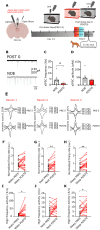
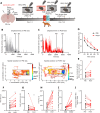

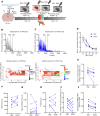
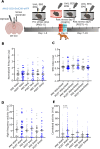
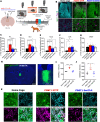
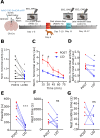
Similar articles
-
Thalamic paraventricular nucleus lesions facilitate central amygdala neuronal responses to acute psychological stress.Brain Res. 2004 Feb 6;997(2):234-7. doi: 10.1016/j.brainres.2003.10.054. Brain Res. 2004. PMID: 14706875
-
A Neural Circuit From Paraventricular Nucleus of the Thalamus to the Nucleus Accumbens Mediates Inflammatory Pain in Mice.Brain Behav. 2025 Jan;15(1):e70218. doi: 10.1002/brb3.70218. Brain Behav. 2025. PMID: 39740781 Free PMC article.
-
Presynaptic dysregulation of the paraventricular thalamic nucleus causes depression-like behavior.Sci Rep. 2019 Nov 11;9(1):16506. doi: 10.1038/s41598-019-52984-y. Sci Rep. 2019. PMID: 31712646 Free PMC article.
-
Limbic thalamus and state-dependent behavior: The paraventricular nucleus of the thalamic midline as a node in circadian timing and sleep/wake-regulatory networks.Neurosci Biobehav Rev. 2015 Jul;54:3-17. doi: 10.1016/j.neubiorev.2014.11.021. Epub 2014 Dec 3. Neurosci Biobehav Rev. 2015. PMID: 25479103 Review.
-
Placing the paraventricular nucleus of the thalamus within the brain circuits that control behavior.Neurosci Biobehav Rev. 2015 Sep;56:315-29. doi: 10.1016/j.neubiorev.2015.08.005. Epub 2015 Aug 7. Neurosci Biobehav Rev. 2015. PMID: 26255593 Review.
Cited by
-
Paraventricular Thalamus Hyperactivity Mediates Stress-Induced Sensitization of Unlearned Fear but Not Stress-Enhanced Fear Learning (SEFL).bioRxiv [Preprint]. 2025 Jun 3:2025.05.30.657116. doi: 10.1101/2025.05.30.657116. bioRxiv. 2025. PMID: 40501542 Free PMC article. Preprint.
-
Dynamic changes of serotonin transporter expression in the prefrontal cortex evoked by aggressive social interactions.Neurobiol Stress. 2025 Mar 26;36:100722. doi: 10.1016/j.ynstr.2025.100722. eCollection 2025 May. Neurobiol Stress. 2025. PMID: 40230625 Free PMC article.
References
MeSH terms
Substances
LinkOut - more resources
Full Text Sources
Medical
Molecular Biology Databases

